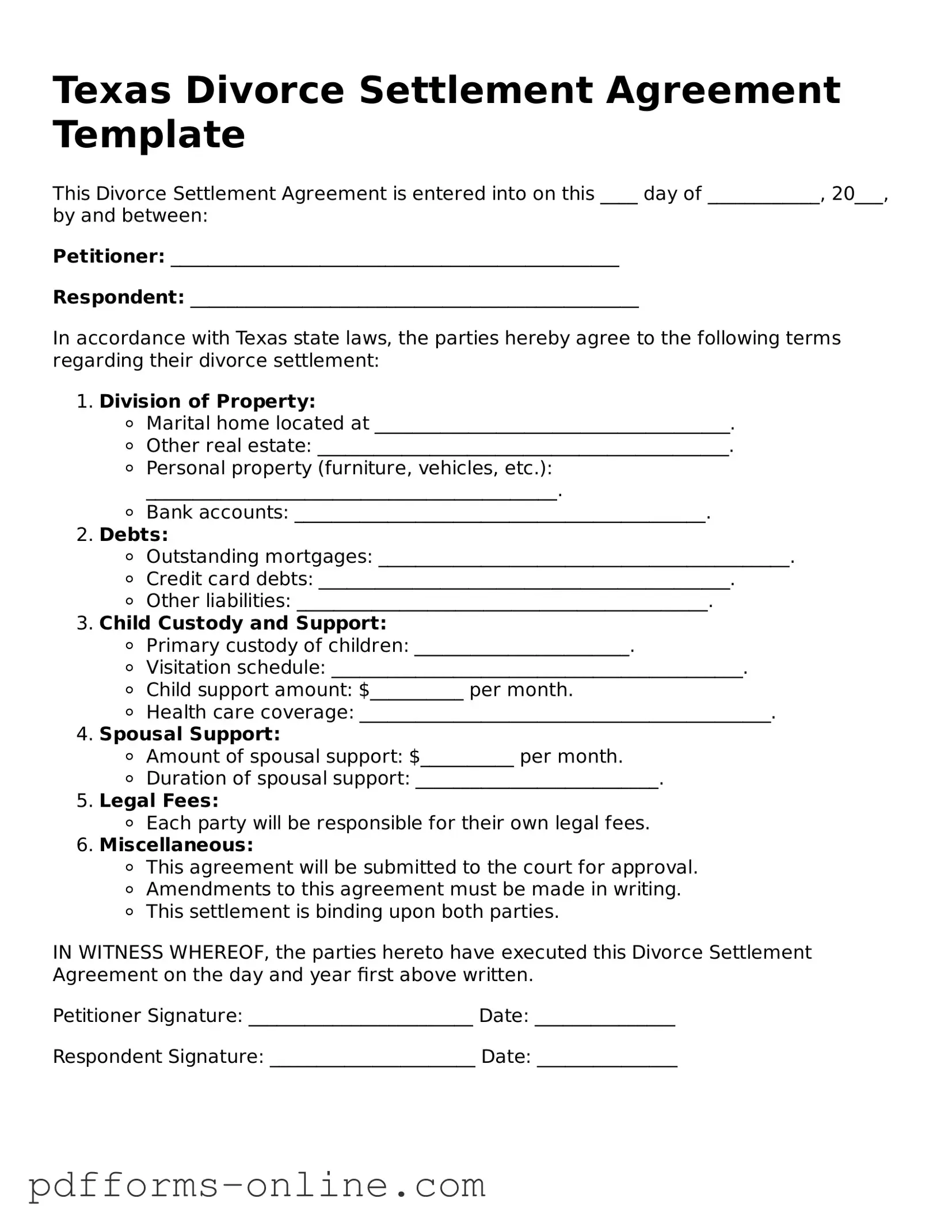Texas Divorce Settlement Agreement Template
This Divorce Settlement Agreement is entered into on this ____ day of ____________, 20___, by and between:
Petitioner: ________________________________________________
Respondent: ________________________________________________
In accordance with Texas state laws, the parties hereby agree to the following terms regarding their divorce settlement:
- Division of Property:
- Marital home located at ______________________________________.
- Other real estate:
____________________________________________.
- Personal property (furniture, vehicles, etc.):
____________________________________________.
- Bank accounts:
____________________________________________.
- Debts:
- Outstanding mortgages:
____________________________________________.
- Credit card debts:
____________________________________________.
- Other liabilities:
____________________________________________.
- Child Custody and Support:
- Primary custody of children:
_______________________.
- Visitation schedule:
____________________________________________.
- Child support amount: $__________ per month.
- Health care coverage:
____________________________________________.
- Spousal Support:
- Amount of spousal support: $__________ per month.
- Duration of spousal support:
__________________________.
- Legal Fees:
- Each party will be responsible for their own legal fees.
- Miscellaneous:
- This agreement will be submitted to the court for approval.
- Amendments to this agreement must be made in writing.
- This settlement is binding upon both parties.
IN WITNESS WHEREOF, the parties hereto have executed this Divorce Settlement Agreement on the day and year first above written.
Petitioner Signature: ________________________ Date: _______________
Respondent Signature: ______________________ Date: _______________
